How CDPs Help Marketing Teams Drive Growth and Efficiency
Updated on 19 Nov 2025
As a marketer, understanding your customers goes beyond knowing their names or emails. It is about seeing the full picture, including what they do, what they like, and how they interact with your brand across every touchpoint. Capturing this insight can be complex but the payoff is huge.
In the past, Customer Data Platforms (CDPs) helped centralize customer data, but only if you had a technical team ready to wrangle, clean, and organize it. Marketers often had to wait while IT moved the data into email and SMS software, or personalization tools, before any campaigns could begin.
Today, modern Actionable CDPs put marketers in control. These platforms not only unify data from multiple sources but also allow you to activate it instantly across channels, including web, email, SMS, push notifications, and more. That means less time managing data and more time delivering personalized experiences that convert.
In this guide, we will break down how different CDPs work, show the benefits for marketing teams, and explore how Insider’s Actionable CDP empowers you to unify customer data, segment audiences, and launch cross-channel campaigns that drive growth and retention.
Insider’s Actionable CDP helps you bring all your customer data from online and offline sources into one place and create connected customer experiences that drive conversions, revenue, and retention. Request a demo or see how it works for yourself.
What’s a customer data platform (CDP)?
A customer data platform (CDP) is software that takes customer data scattered across disparate sources and brings it together in one place.
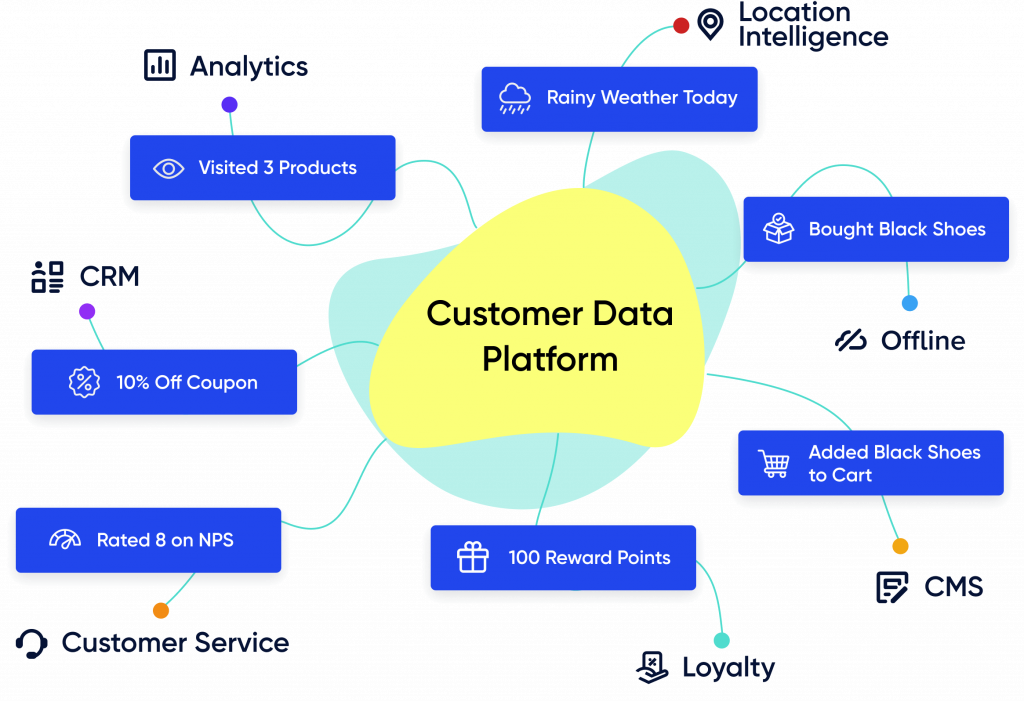
It’s particularly useful for marketing teams that use many different systems and channels to talk to customers. For example, most CDPs can unify data from online and offline sources like customer relationship management systems (CRMs), analytics platforms, social media tools, customer service software, point-of-sale (POS) devices, and more.
CDPs help marketers:
- Find all touchpoints and interactions customers have with a product or service.
- Build 360-degree customer profiles and store them in one central location.
- Manage data privacy to comply with GDPR and other regulations.
- Resolve omnichannel customer identities.
Thanks to these benefits, CDPs make it much easier to execute marketing strategies across channels, create personalized customer journeys at scale, and build more profitable, meaningful customer relationships.
How do marketing CDPs differ from traditional CDPs?
While all CDPs can aggregate data to create a single customer view, they can be very different when it comes to their other use cases. Based on these differences, we can distinguish between two types of CDPs:
- Data and Analytics CDPs (for technical use cases)
- Actionable CDPs (for marketing use cases)
Data and Analytics CDPs
These first CDPs aren’t built for data activation. They can consolidate customer data and help data teams with customer data management but don’t necessarily offer marketers the tools they need to activate data across channels.
These solutions are known as Data CDPs and Analytics CDPs. While there’s overlap between these categories, each one has unique areas of specialization:
- Data CDPs enable data control and data manipulation. They allow companies to manage and integrate various types of data.
- Analytics CDPs are similar but focus more on visualizing the data, helping teams run analyses and obtain insights.
These early CDPs are geared toward more technical roles and use cases, such as data governance, data cleaning, and schema management. And even marketers who have the technical skills necessary to take full advantage of these CDPs still have to move their unified data downstream to marketing platforms to activate it.
Actionable CDPs
Actionable CDPs, sometimes called Campaign CDPs, excel at activating customer data, making them a great choice for marketers.
Like the previous CDPs, these ones can also create a single source of truth for all customer data and bring many profiles into one customer database. However, they also have the necessary tools for using that data to create successful marketing campaigns across channels.
For example, Insider’s CDP can gather customer data points from tons of different sources, including:
- APIs.
- CRMs.
- Analytics platforms.
- Customer support and live chat tools.
- Content management systems (CMSs).
- Data lakes, data warehouses, and other raw data sources.
- And many more.
By bringing all of this data into one place, Insider’s CDP allows you to align your marketing efforts, create predictive segments, and develop personalized experiences across 12+ channels (website, mobile, web push, email, SMS, WhatsApp, and more).
Marketing CDPs: 3 Example use cases
After a marketing CDP has unified your customer data, you can activate that data by developing personalized, cross-channel experiences at scale. Here are three things you can do with the foundation provided by Insider’s Actionable CDP:
Example #1: Personalize experiences for known and anonymous users
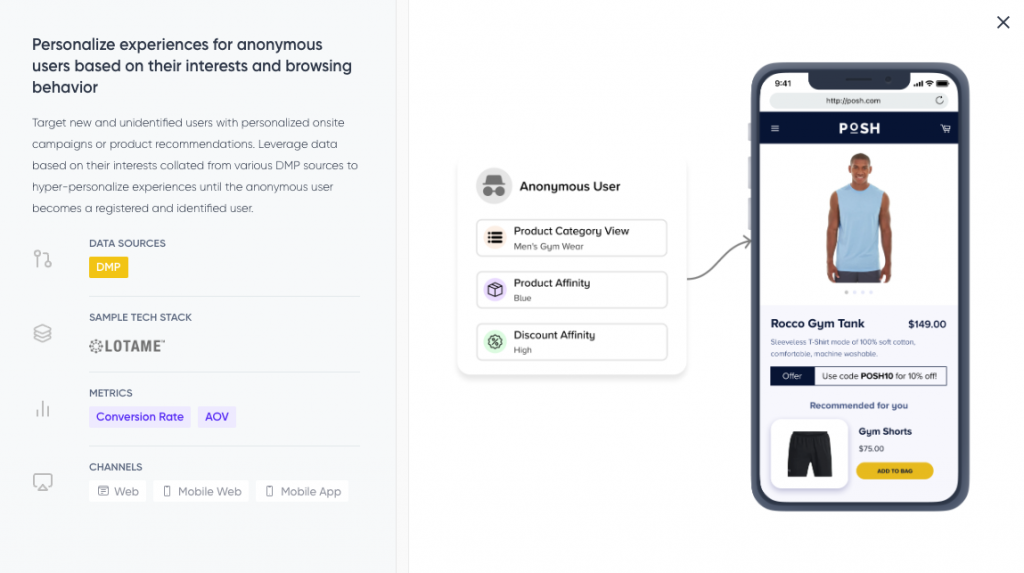
Like all CDPs, Insider creates unified profiles for known customers, i.e., those who have shared contact information with you. However, our CDP also creates profiles for anonymous visitors on your site or app. These profiles contain key information, including:
- What pages they visited.
- Which products they’re interested in.
- What attributes they’re considering (colors, sizes, prices, etc.).
- And much more.
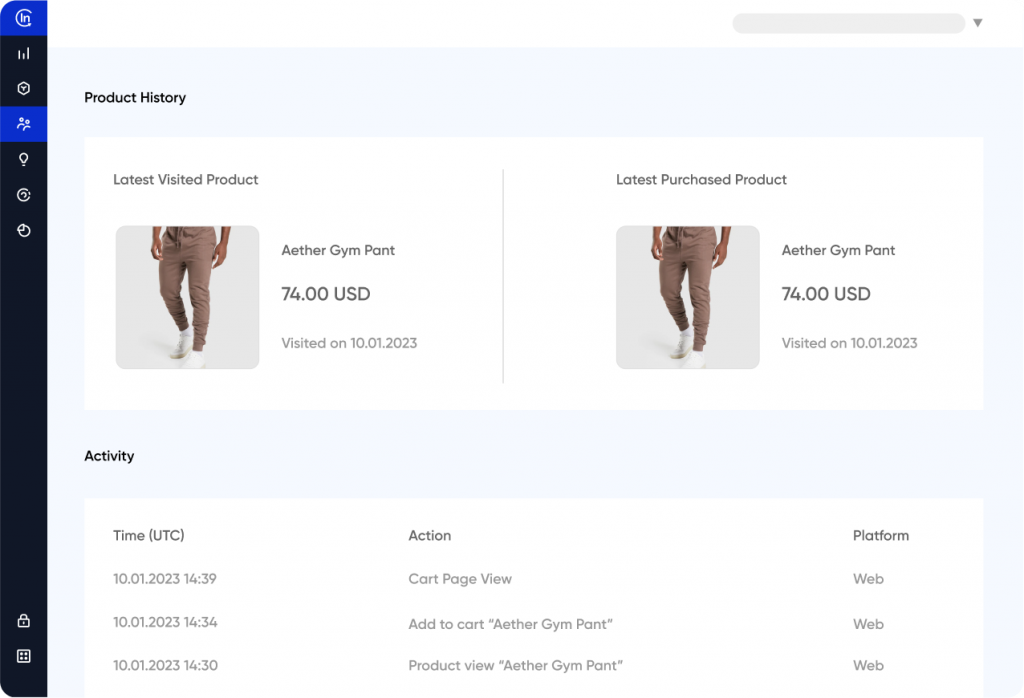
With this information, you can use website personalization to show anonymous visitors relevant content, messaging, and product recommendations. Plus, you can bring them back to your site with targeted push notifications.
Put simply, Insider’s CDP and personalization tools let you tailor the experience of anonymous visitors to increase conversion rates and lower customer acquisition costs. This is a crucial capability if you want to make the most out of your marketing budget since the majority of traffic on most websites comes from anonymous visitors.
For example, Trolley, Dubai’s fastest-growing online grocery store, increased its conversion rate for first-time visitors by 29.81% with Insider’s sign-up personalization functions.
As anonymous customers share contact information with you, like their emails and phone numbers, their unified profiles will become even more detailed and accurate. You’ll be able to scale your personalization efforts across their preferred channels and ensure their entire journey with your brand is tailored to their interests.
Example #2: Prevent customer churn through low-NPS suppression lists
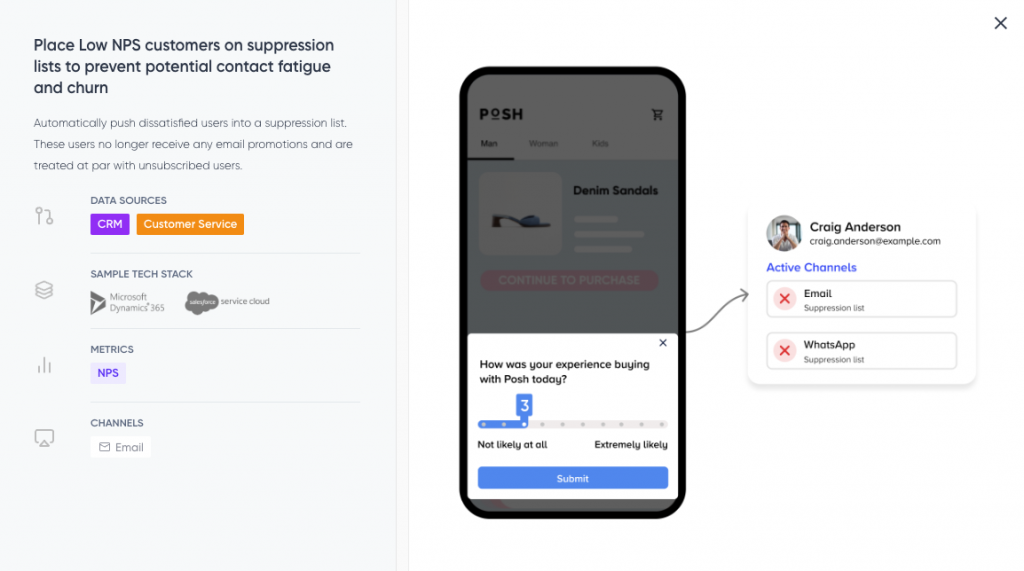
Insider’s marketing CDP lays the foundation for you to segment customers, increase retention, and reduce churn.
For example, customers with a low net promoter score (NPS) likely don’t want to hear too much from you. Overloading them with messages will just lead to churn, so you need to be selective with how and where you contact them.
To prevent this, you can put them on a suppression list. From there, our personalization tools can ensure you’re only targeting these customers with relevant content, and product recommendations on their preferred channels at the times they’re most likely to engage with your brand.
Example #3: Leverage online-offline intelligence, including real-time location
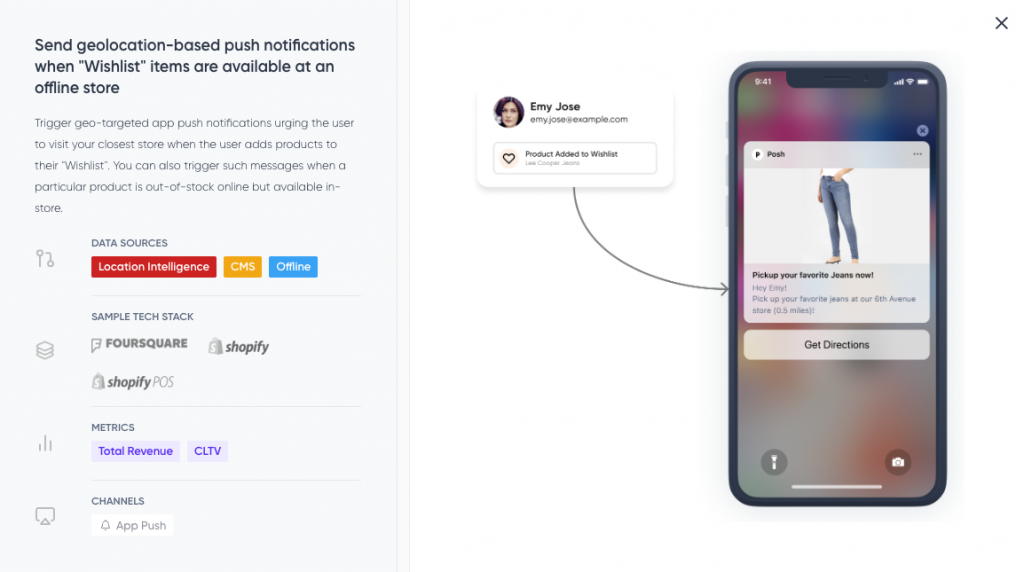
With Insider, you can:
- Send location-based push notifications whenever customers are walking by your brick-and-mortar store. These notifications can include items that these customers have on their wishlists.
- Show online product recommendations based on an individual customer’s offline transactions.
- Use customer insights from online sources to inform in-store conversions that sales associates and representatives have with customers.
For example, the eCommerce platform BerryBenka used Insider to integrate its online and offline customer data. By bridging this gap, the company obtained deeper insights into key customer characteristics and delivered new cross-channel campaigns that helped them increase onsite conversions by 7.18% and generate 17,790+ leads.
These are just a few examples of how Insider enables data activation. If you’d like to explore other ones, we have a free CDP use cases explorer on our website. It lets you filter use cases by data source, including loyalty programs, surveys, CMS, and beyond, and see how to put the data you get from a marketing CDP into action.
Benefits of CDPs for marketing teams
As mentioned earlier, Actionable or Campaign CDPs move beyond the functionality offered by Data and Analytics CDPs. Here are some key benefits of Actionable CDPs in terms of marketers’ workflows and campaign success.
Clear, 360-degree customer profiles
For marketers, the most immediate benefit of the actionable CDP is a clear, 360-degree customer profile. For example, here’s how a customer profile looks in Insider’s CDP:
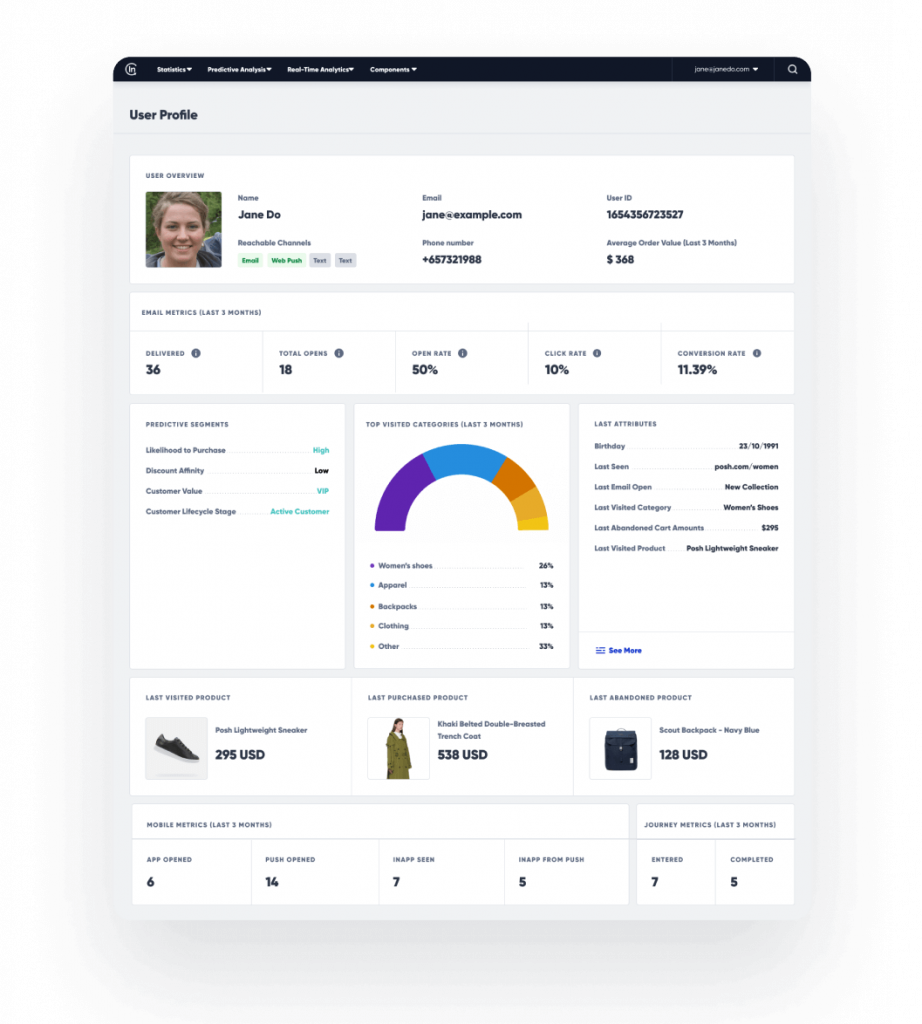
For most marketing teams, customer data is stored in different systems, like email tools, social listening software, SMS solutions, CRMs, and so on. Marketing CDPs help you overcome these data silos by:
- Integrating customer data from all digital systems and touchpoints.
- Ingesting real-time data and bringing first, second, and third-party data into each unified customer profile.
The resulting 360-degree customer profiles give you the full customer picture in one place and help you uncover key customer identifiers (contact info, CRM IDs, demographics, etc.), behaviors, and preferences.
Connected marketing stack and smooth data flow
The best CDPs have excellent integration capabilities, guaranteeing the right data flows into one centralized, actionable location. That’s how they ensure valuable customer data doesn’t remain siloed off in various disconnected systems.
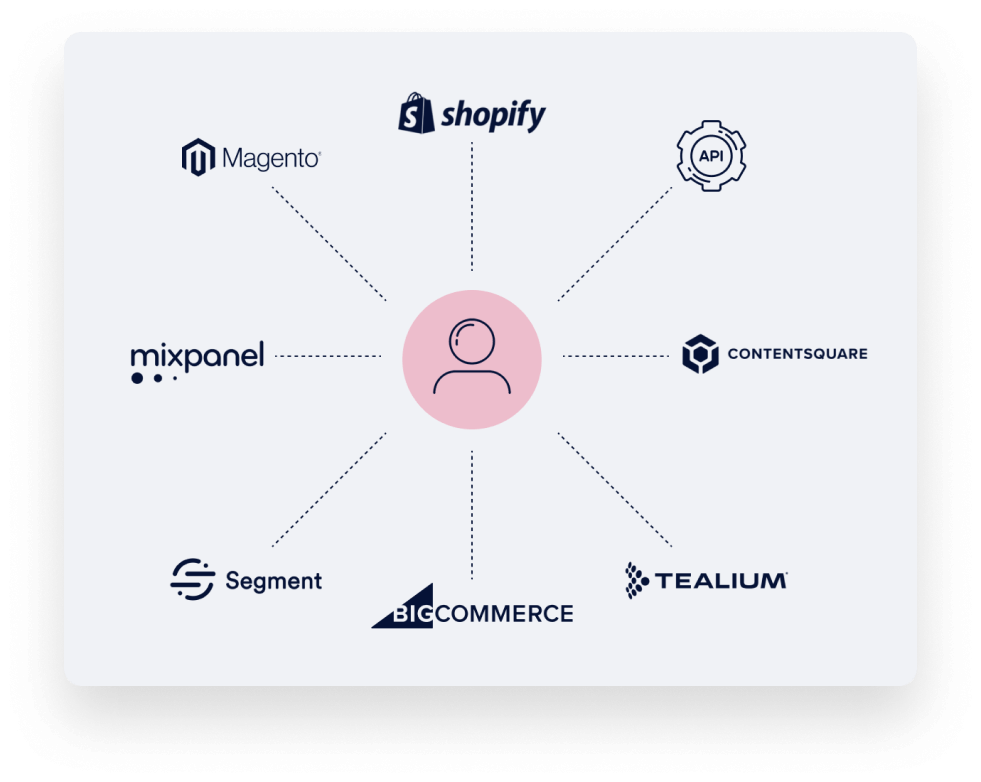
For example, Insider integrates seamlessly with hundreds of solutions across 20+ categories to give you a 360-degree view of your customers. Plus, our support team constantly helps customers uncover and connect to the right data sources as quickly as possible.
Here’s one review on this topic from Hien B., a Data Analyst in the banking industry:
“We had a worry that the app integration could take some time as we have seen it with other vendors but Insider was different and the integrations happened super quickly without hassle thanks to Insider’s team. It didn’t even need involvement from our team to fix things which was great!”
Smarter predictions based on highly targeted marketing segments
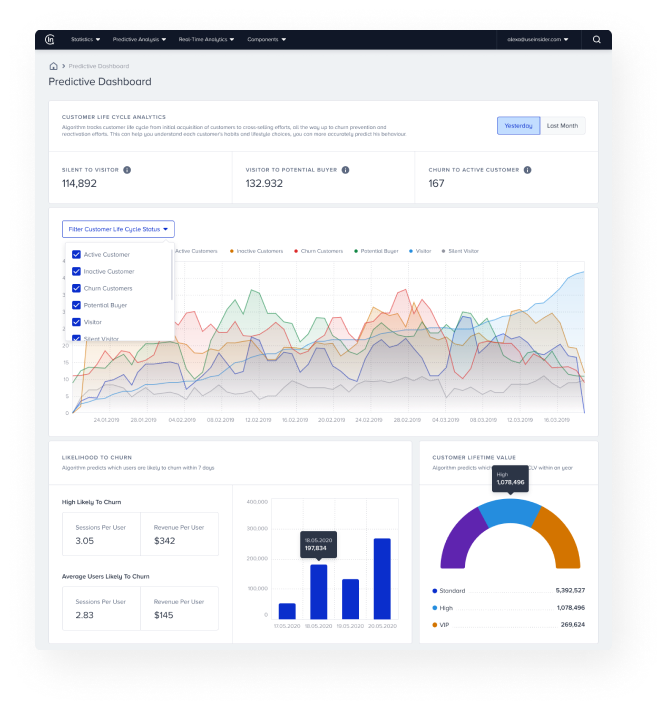
Some Actionable CDPs can also create AI-powered predictive audiences. For example, Insider goes beyond standard segmentation characteristics like demographics, devices, or platforms and pre-made segments such as cart abandoners. Our machine learning algorithms analyze customer data to come up with predictions about customers’:
- Discount affinity.
- Likelihood to churn.
- Likelihood to purchase.
- Projected customer lifetime value (CLTV)
- And more.
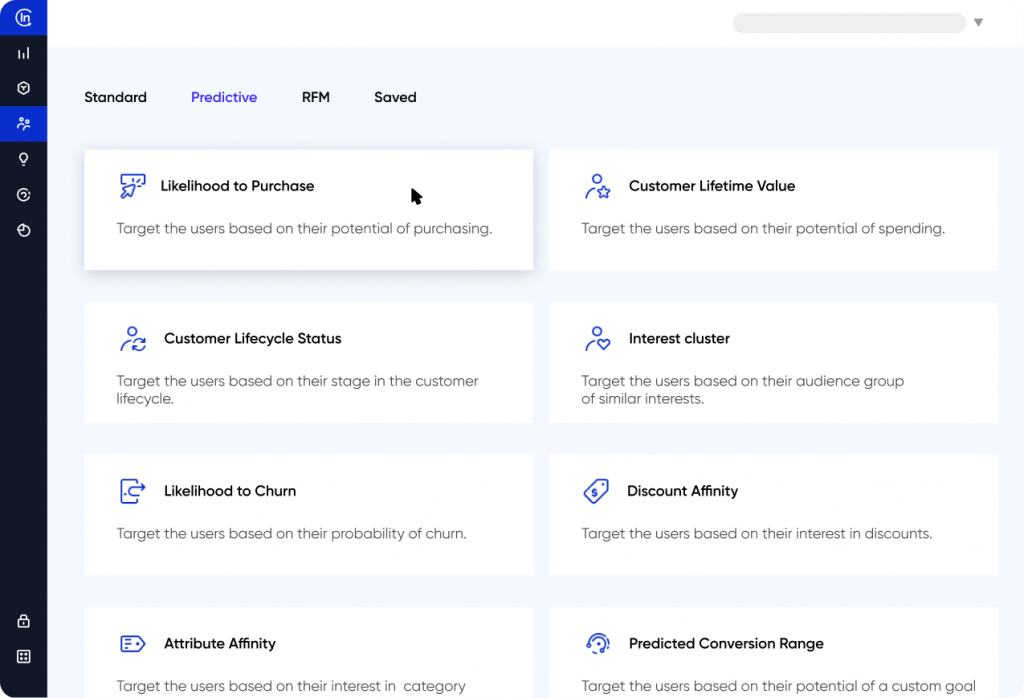
For example, U.S. Polo Assn. used Insider’s AI-powered predictive audiences to target and engage a valuable segment of users with a high likelihood of conversion. Thanks to Insider’s Likelihood to Purchase algorithm, they achieved a 311% increase in conversion and a 135% increase in return on ad spend.
Cross-channel personalization and journey orchestration
Marketing teams can use Actionable CDPs much more in their day-to-day compared to Data or Analytics CDPs because they have marketing automation tools, personalization capabilities, and activation channels natively incorporated with the CDP.
Insider’s platform shines in this regard, with intuitive personalization capabilities and a customer journey builder that works across multiple channels. You can use them to create individualized, cross-channel customer experiences without having to pass your data to other systems, which saves hours of manual work, prevents data inaccuracies, and helps you drive revenue, conversions, and retention.
Dynamic personalization across channels
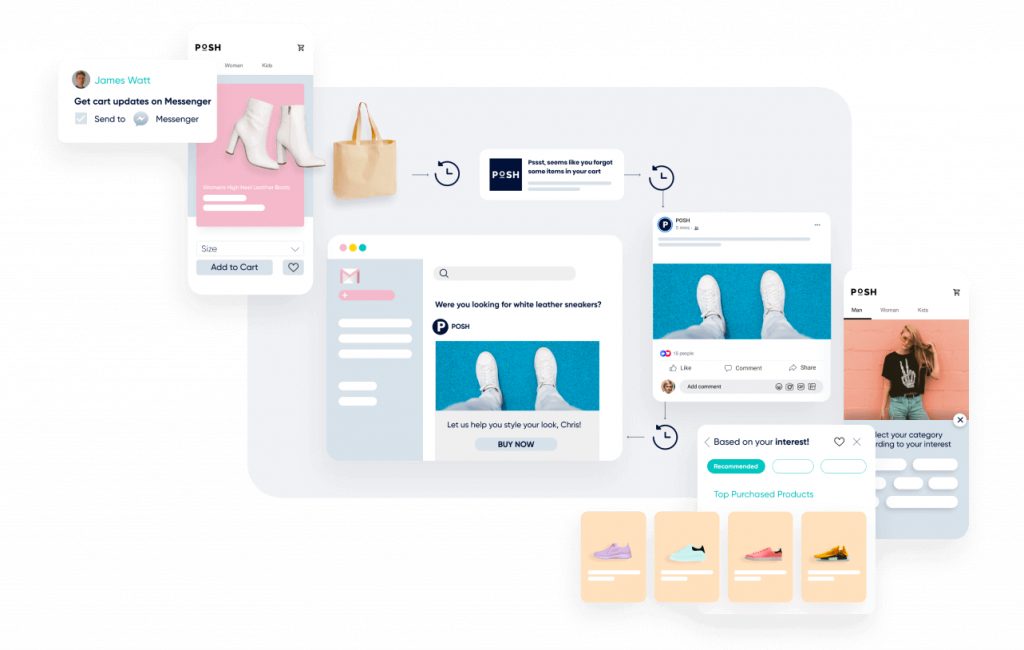
Insider lets you tailor every element of the customer journey to each user’s behaviors, interests, and preferences. Our platform supports 12+ channels natively, including websites, mobile apps, email, web push notifications, SMS, WhatsApp, and more.
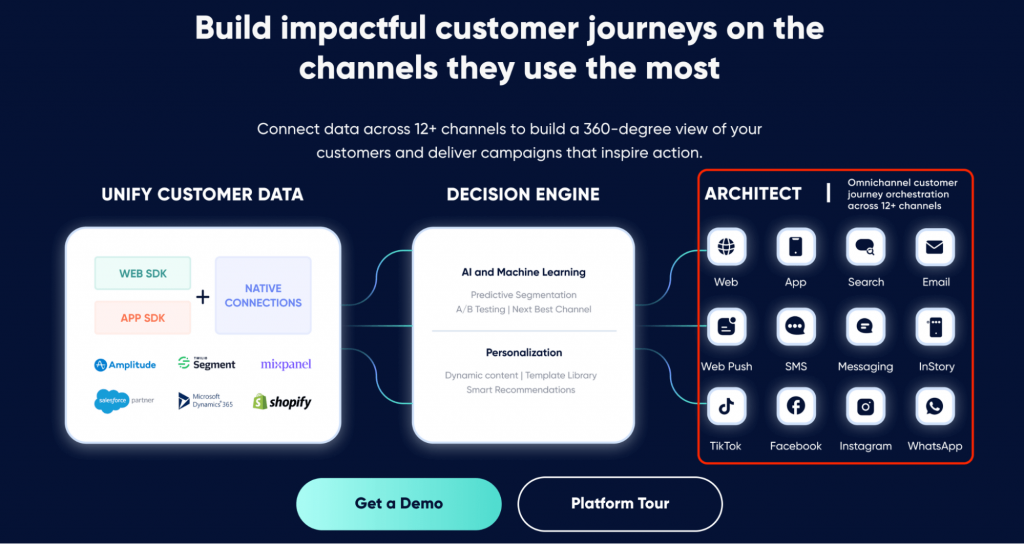
For example, using Insider’s on-site personalization capabilities, you can personalize the banners, categories, product recommendations, and site search results that customers see. You can also use InStory to add bite-sized, Instagram-like stories to your site or app, which are great for driving engagement, product discovery, and revenue.
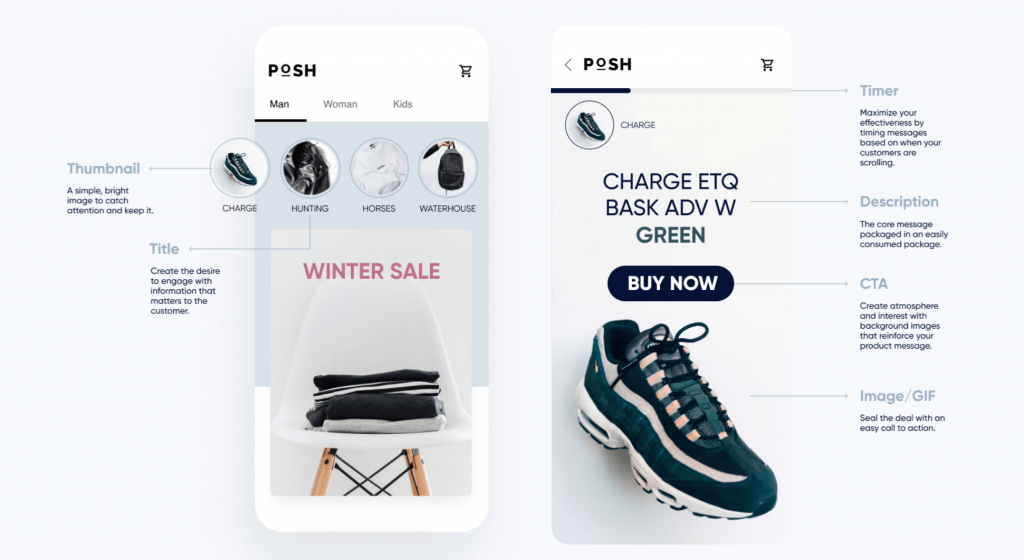
Overall, Insider’s personalization suite helps ensure you’re taking every opportunity to generate more revenue, improve conversion rates, and maximize your marketing spend.
For example, fashion brand NA-KD increased CLTV by 25% across 70+ markets using Insider’s cross-channel personalization capabilities. By showcasing relevant products and content on the channels customers want to engage in, such as on-site, web push, in-app, email, and SMS, they were able to achieve a 72x ROI in 12 months.
Targeted, cross-channel journey orchestration
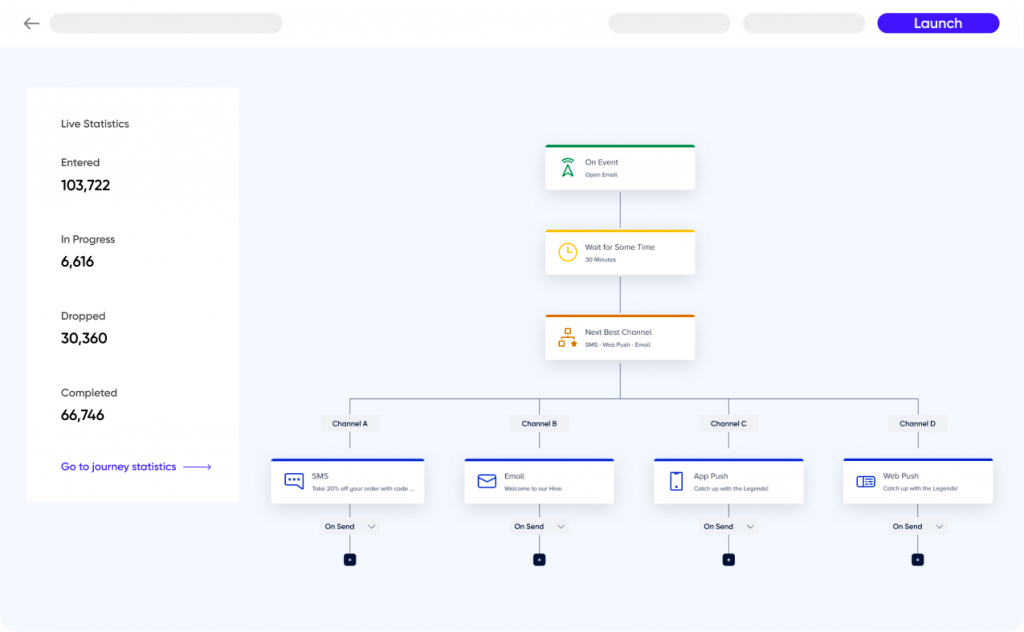
Insider has built-in tools that let you orchestrate seamless customer journeys using omnichannel marketing automation.
Our powerful customer journey builder called Architect can help you build, automate, and personalize campaigns at scale. It makes creating individualized customer journeys easy with features such as:
- Next-best channel predictions, which analyze your customers’ past behaviors and automatically use the channel they’re most likely to engage on.
- Send-time optimization, which analyzes engagement data and automatically sends each message at the time customers are most likely to engage with it.
- Pre-built templates for different channels and use cases, like increasing conversions, generating leads, gamifying the shopping experience, and more.
- Cross-channel A/B testing, which lets you compare different messages, CTAs, journey flows, send times, or any other element against each other to see which one produces better results.
- Native support for 12+ channels including SMS, email, WhatsApp, web and app push notifications, on-site, in-app, and more.
Using Insider’s omnichannel marketing solution, Slazenger gained 49X ROI in only eight weeks and achieved a 700% increase in customer acquisition.
Increased conversion rates, average order value, and return on ad spend
All the examples, benefits, and use cases we’ve shown above lead to the same initial outcome: helping teams consolidate and act on their data to drive revenue.
That’s how Actionable CDPs like Insider enable marketers to achieve higher conversion rates (CR), increase average order value (AOV), boost return on ad spend (ROAS), and lower customer acquisition costs (CAC). Here are just a few ways that Insider’s CDP and activation tools have helped brands drive key business outcomes:
- Higher CR: Vodafone increased CR by 159% in 3 months using Insider’s cart reminder push notifications with a targeted audience segment. Adidas similarly increased its homepage CR by 13% in one month through personalized product recommendations.
- Higher AOV: Using a Progress Bar to nudge customers to add more items and unlock free shipping, Philips achieved a 35% uplift in AOV with Insider’s functions. Similarly, nutrition giant GNC increased its AOV by 41% during a promo period by using a discount display element in its home page search bar.
- Higher ROAS: Computer brand Monster Notebook increased ROAS by 190%, by targeting a key customer segment with the help of Insider’s AI-powered predictive audiences. Using the same technologies to tailor their ads, French fashion brand Pierre Cardin increased its ROAS by 164.83%.
- Lower CAC: Using Insider’s predictive ad audience capabilities to target a valuable segment of users with a high likelihood of purchasing, U.S. Polo Assn. decreased its CAC by 58%. With a similar approach, Pierre Cardin also increased both its CR and ROAS, ultimately decreasing its CAC by 67.95%.
Unify your customer data and drive growth with Insider’s marketing CDP
Insider tops G2’s Fall 2025 reports as the #1 leader in eleven categories, including customer data platforms. It provides native support for 12+ channels and includes AI-powered segmentation and automation capabilities ideal for companies looking to build personalized cross-channel customer experiences.
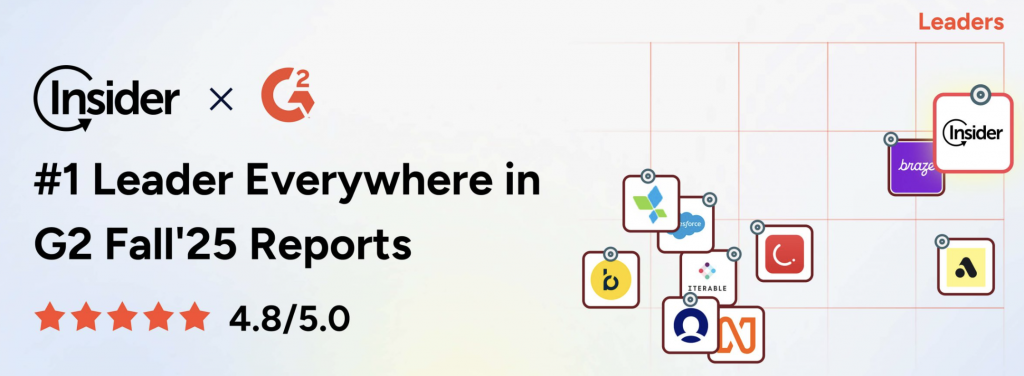
We’re rated as the best and easiest-to-use customer data platform (CDP) on G2. Our support team, which has the highest possible user satisfaction score of 100/100, will help you get all your customer data into one place so you can focus on segmenting your audience, uncovering insights, driving revenue, and maximizing your marketing budget.
Join 1200+ global brands, from high-growth startups to enterprise players that use Insider to unify their data and personalize each step of their customers’ journeys. Click here to book a demo with our team and learn how Insider can help you reach your revenue goals.
Frequently asked questions (FAQs) about CDPs
CDPs and data management platforms (DMPs) collect and organize customer data but focus on different types of information and have different purposes.
DMPs are for storing third-party data to help advertisers and ad agencies segment and target audiences via paid ads. DMPs cannot accept first-party data and primarily operate with anonymized data, including cookies, devices, and IP addresses.
CDPs use all kinds of data, including first-, second-, and third-party data, to help brands remove data silos, understand customers, and build detailed customer segments.
More versatile than DMPs for marketing, CDPs can be employed in various use cases beyond paid advertising, like unifying all customer data and creating personalized omnichannel customer journeys.
Customer relationship management system (CRM) providers such as Salesforce store customer interaction data like emails, support tickets, sales demos, and contracts. They help marketing, customer support, and sales teams track interactions with leads and customers. Their focus is on interactions with customer-facing teams (particularly sales and customer support).
CDPs provide a single place to store all customer and visitor data, regardless of its source. They store customer interaction data, just like CRMs, but also store customer behavioral data, transactional data, event data, survey data, and more. This makes CDPs a better choice for companies that want a unified view of the data generated at each customer touchpoint, not only through direct interactions with sales and customer support teams.



















